How Much Electricity Does A Dehumidifier Use
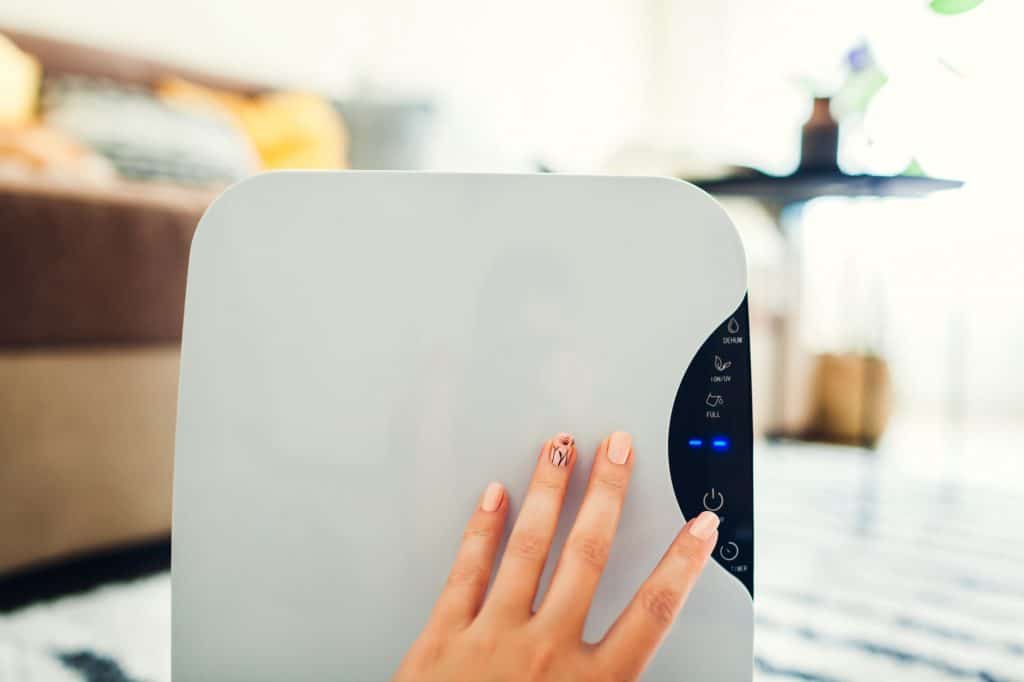
As we are coming into summer yet again, the temperature both outside and inside our houses is steadily rising. Texas, for example, already known as the hottest place in the USA, is bracing for a hot spell towards the end of May.
In some U.S. states, high temperatures are accompanied by increased levels of humidity. In hot and humid climates, buying a dehumidifier for your home can really work to your advantage. But do you know how much electricity and therefore money are you using? We explored how much does it cost to run a dehumidifier.
How Does An Electric Dehumidifier Work?
Let’s start by looking into how dehumidifiers work. The simple, back of an envelope explanation is that the hot, moist air in your house is drawn into the dehumidifier by a fan, reducing the overall moisture.
Makes sense. Let’s look at the engineering explanation:
The metal surface of the dehumidifier is cooled down. When the hot humid air touches the metal surface, it will also get cooled. Since cold air has more liquid content than warm air, drops of water soon begin to condensate on the metal surface of the dehumidifier. This condensed water is collected in a plastic bucket, which you can empty regularly.
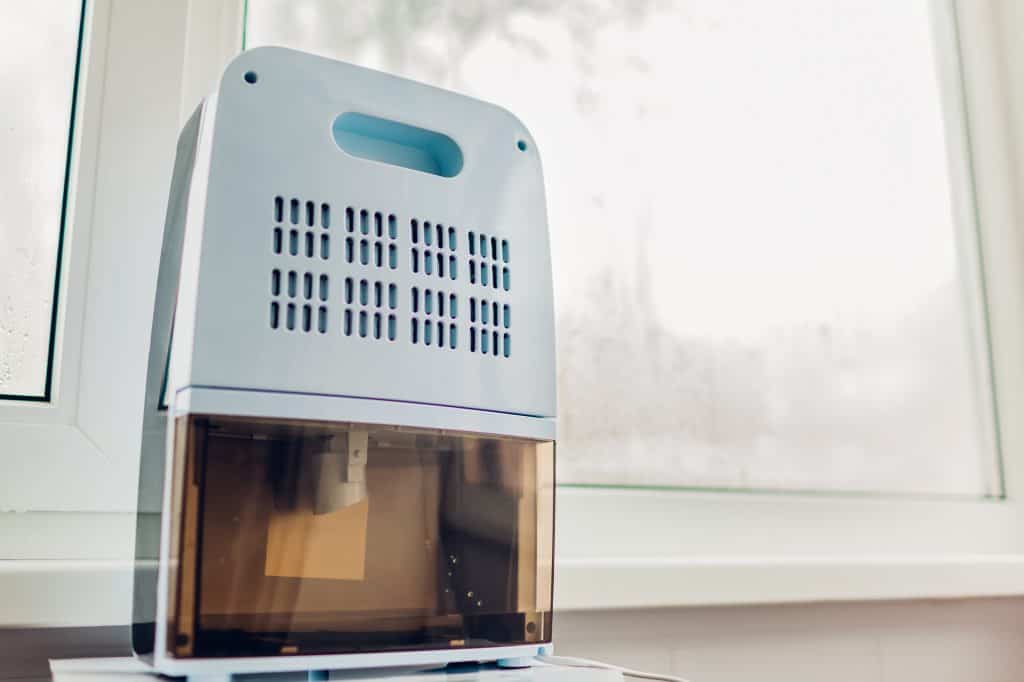
Typical dehumidifiers are designed to work best at temperatures above 65°F degrees (between 70 and 90 degrees). Anything below 65°F that and the condensed water starts freezing on the metal coils.
How To Calculate Dehumidifier Electricity Cost?
Like most of your household appliances, a dehumidifier will consume energy while it’s running, which costs money. Your dehumidifier running costs will be reflected in your monthly electricity bill. It’s important to understand how you can reduce the cost of this effective device, that helps you reduce mold and mildew growth at your home.
When it comes to the cost to run dehumidifier, there are three important factors to consider:
- How much energy does a dehumidifier use
- How efficiently does a dehumidifier use energy
- How much are you paying per kWh of energy
We will look at each of these in more detail next.
How Much Energy Does A Dehumidifier Use
The energy consumption of your appliances (in kilowatts per hour) can be found on the label and the manual. This number will be expressed in kilowatts per hour and it will something like this:
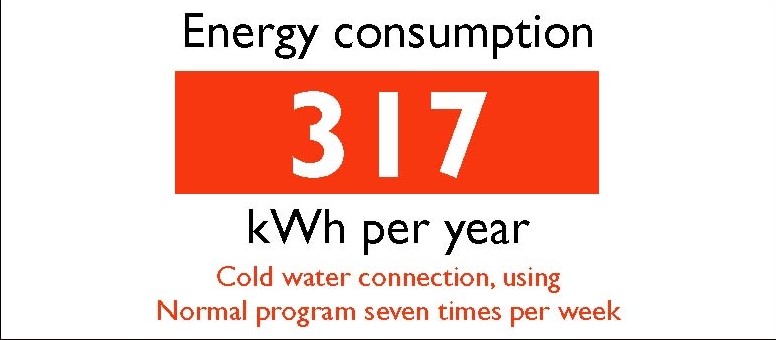
The average energy consumption of a dehumidifier device is 280 watts-hour or 0.28 kilowatts-hour. Not sure what does it mean? Don’t worry; you aren’t alone. Put simply, a kilowatt-hour (Wh) is a way to measure the amount of energy consumed over a period of time. If you let your dehumidifier run for an hour, it will consume 0.28 kilowatts.
If you are interested to learn more about different energy units and what they mean for your power usage, we put together this simple guide to help you navigate the basics like a pro.
How Efficiently Does A Dehumidifier Use Energy
The second thing to understand is the energy efficiency of your device, or how efficient it is at removing water from the air per each burnt kilowatt-hour. Of course, what you are looking for is high energy efficiency (the higher the better).
The Energy Star website will help you understand how to compare dehumidifiers based on their energy factors and offer other useful advice to consider when buying an appliance. If you choose to buy an energy star certified dehumidifier, your appliance will use anywhere between 10 to 50 percent less energy each year than a non-energy efficient equivalent, lowering your power cost.
How much are you paying per kWh of energy
Of course, your electricity rate per kilowatt-hour will also have a significant impact on your final power bill. You might not be aware that average electricity rates differ in every state, from the cheapest Louisiana (7.71 cents per kilowatt-hour) to the most expensive Hawaii at whooping 29.18 cents per kilowatt-hour.
If you are fortunate to live in one of the 18 energy-deregulated U.S. states, you can easily switch to an alternative power provider and reduce your cost per kilowatt-hour of electricity.
How Much Does A Dehumidifier Cost To Run
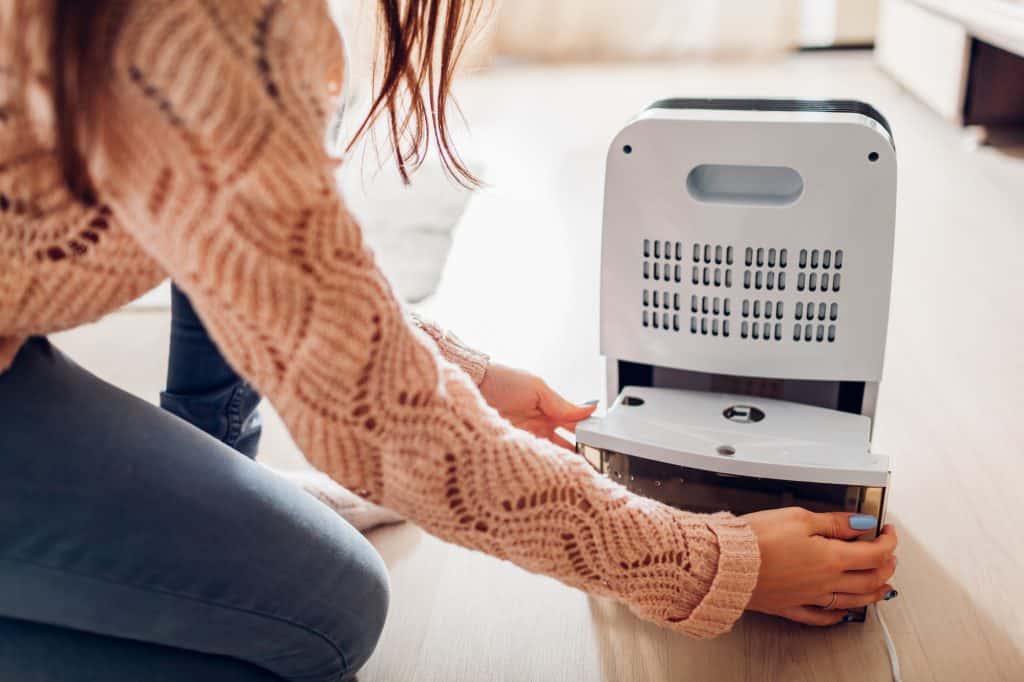
So now that we know what are the main components of your dehumidifier usage cost, let’s test your understanding with a practical example.
Let’s say you have a standard device at home that uses 280 watts-hour of electricity to reduce your home excess moisture.
You live in Texas and you haven’t yet switched electric suppliers, which means that you are paying the standard electricity tariff of 11.85 cents per kilowatt-hour.
That means that your dehumidifier uses 11.85 x 0.28 kWh of power to run, which equals to the cost of 3.31 cents per hour.
Now, the summer is hot and humid, so you keep the device on for 10 hours every day, which adds up to a daily cost of (0.0331 x 10) 33 cents per day.
That’s an average monthly cost of $9.93 or approximately $119.16 annual cost. Of course, this calculation is based on approximate figures, but hopefully, it gave you a good template to calculate your own dehumidifier cost.
How To Make Your Dehumidifier More Efficient?
To make your dehumidifier run as efficiently as possible, there are a few factors to consider. We already covered investing in a power-efficient dehumidifier, by choosing an energy star certified appliance.
Placing your dehumidifier in the right spot is equally important as the closer it is to the source, the faster the operation will be. Common places include the basement, bathroom, laundry room, and bedroom.
It is also important to remember that your dehumidifier will need some maintenance, as a layer of dust on your appliance can affect the dehumidification capacity. To keep it in good working condition, it should be cleaned on a regular basis, including the coils, the fan blades, the filter, and the water tank.
Finally, don’t rely on just your appliance to reduce the air moisture in your home. We will now talk about some other useful tricks to dehumidify your home.
Can You Reduce Humidity At Home Without A Dehumidifier?
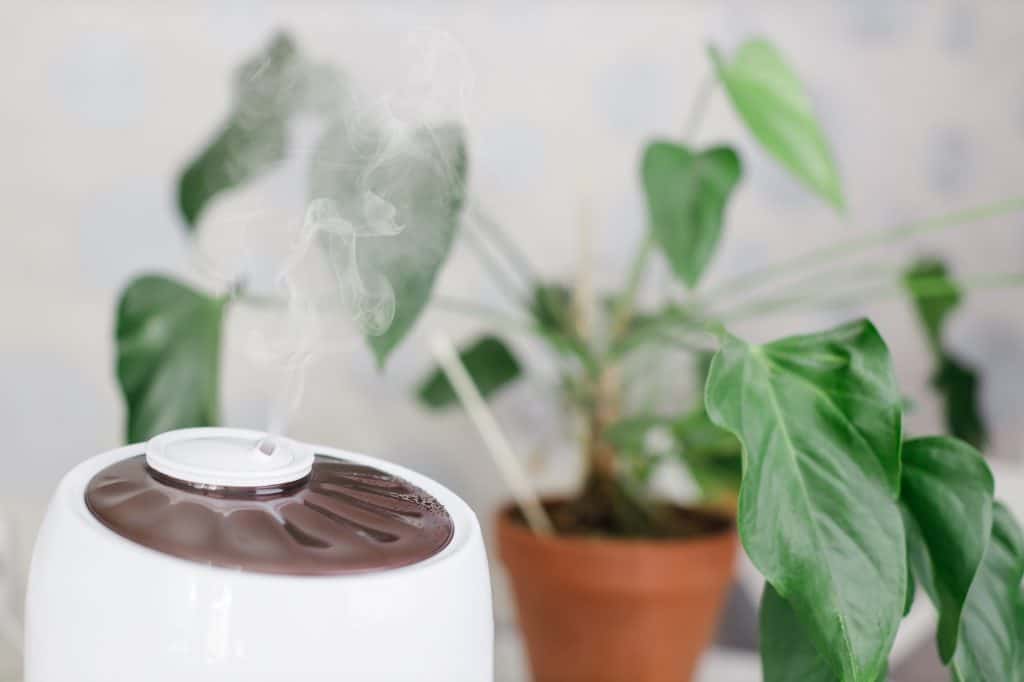
While dehumidifiers are a great way to reduce the air humidity at your home, preventing the growth of mold and mildew. it’s important to remember though that there are other ways to reduce the air moisture, without having to invest in a dehumidifier.
- Use calcium chloride – Calcium chloride is a salt crystal that can absorb air moisture and can easily be found in local home improvement or hardware stores. Put calcium chloride in a container in the damp room and the product will work its magic to suck the moisture from the surrounding air.
- Use vent fans in bathrooms and kitchens to remove excess moisture at the source.
- Repair leaking outdoor faucets. Not only will this help reduce humidity, but it will also save you money on your water bills.
- Make room for indoor plants – Some plants, such as peace lily or Boston fern are natural dehumidifiers and harvest much of their moisture through their leaves, reducing the air dampness.
Should You Buy A Dehumidifier?
So the question you are probably asking at this point is – are dehumidifiers worth it? The answer is – they can be, but you must be aware of what you are buying. The benefit of a dehumidifier is that it will effectively reduce the excess moisture in your home. Its role can be crucial in preventing your home from potential structural damage if you have a basement prone to having moisture issues.
However, if not selected and cared for properly, dehumidifiers can end up putting a large dent on your bills, in the form of a high electricity cost. Try to get yourself the most energy-efficient dehumidifier that you can and maintain it properly. Use other simple methods of reducing the moisture from the air, for example by using ventilators, buying the right type of indoor plants, or repairing outdoor faucets. We hope that you will make the most of your dehumidifier and enjoy a great summer.
FAQs
Below are answers to some of the questions you might have about dehumidifiers.
How long do you need to run a dehumidifier?
The advice on how long should you let your dehumidifier on varies from seven to twelve hours a day. However, the more precise answer depends on the dampness of the room and on the power efficiency of your device. If the room is really humid, you might need to let it run the whole day. New models come with an LED screen that shows the humidity of the room. Once the room feels cooler and the air drier, you can switch your device off.
Do dehumidifiers increase the electric bill?
Just like any other appliance in your home, dehumidifiers consume power when they are switched on, adding to your monthly electricity bill. However, these devices can be very useful in removing the excess moisture from the air, preventing the spread of mild dew or mold. To reduce the running cost, you should look for an energy star rated dehumidifier, that will burn less power to reduce the air moisture.
How much does a dehumidifier cost per month?
The monthly cost of your dehumidifier will depend on three main factors – how long do you keep it turned on, what’s the efficiency rating of your device and how much do your pay per kilowatt-hour of electricity. To reduce the cost of running a dehumidifier, avoid using it at all times, and try instead other methods to reduce the air moisture. If possible, invest in an energy star certified appliance and switch power suppliers to find a better electric rate to pay.
Updated on




Add Comment
You must be logged in to post a comment.